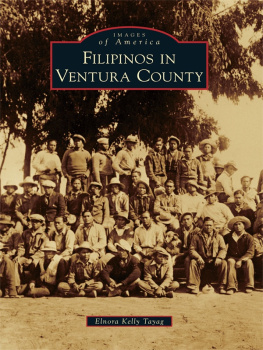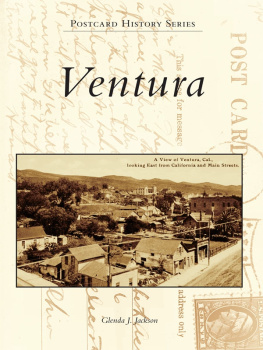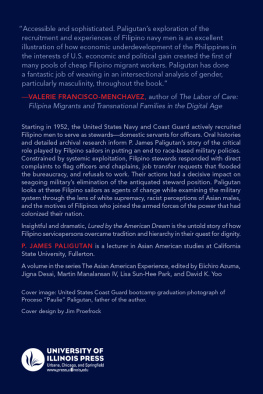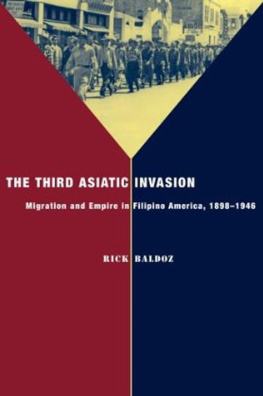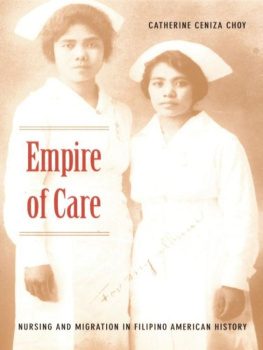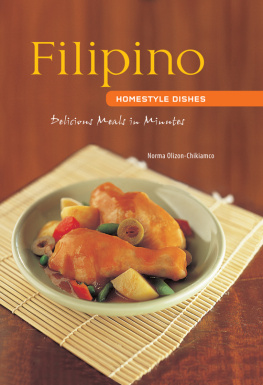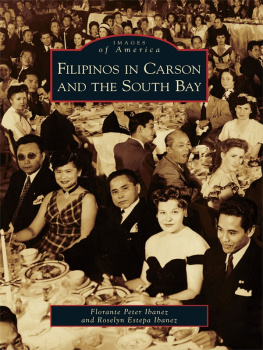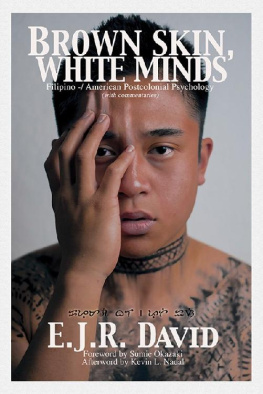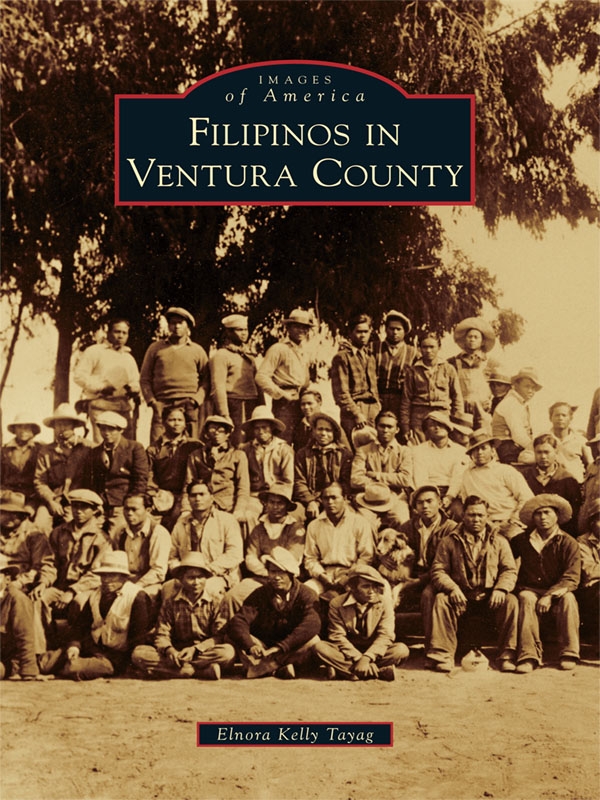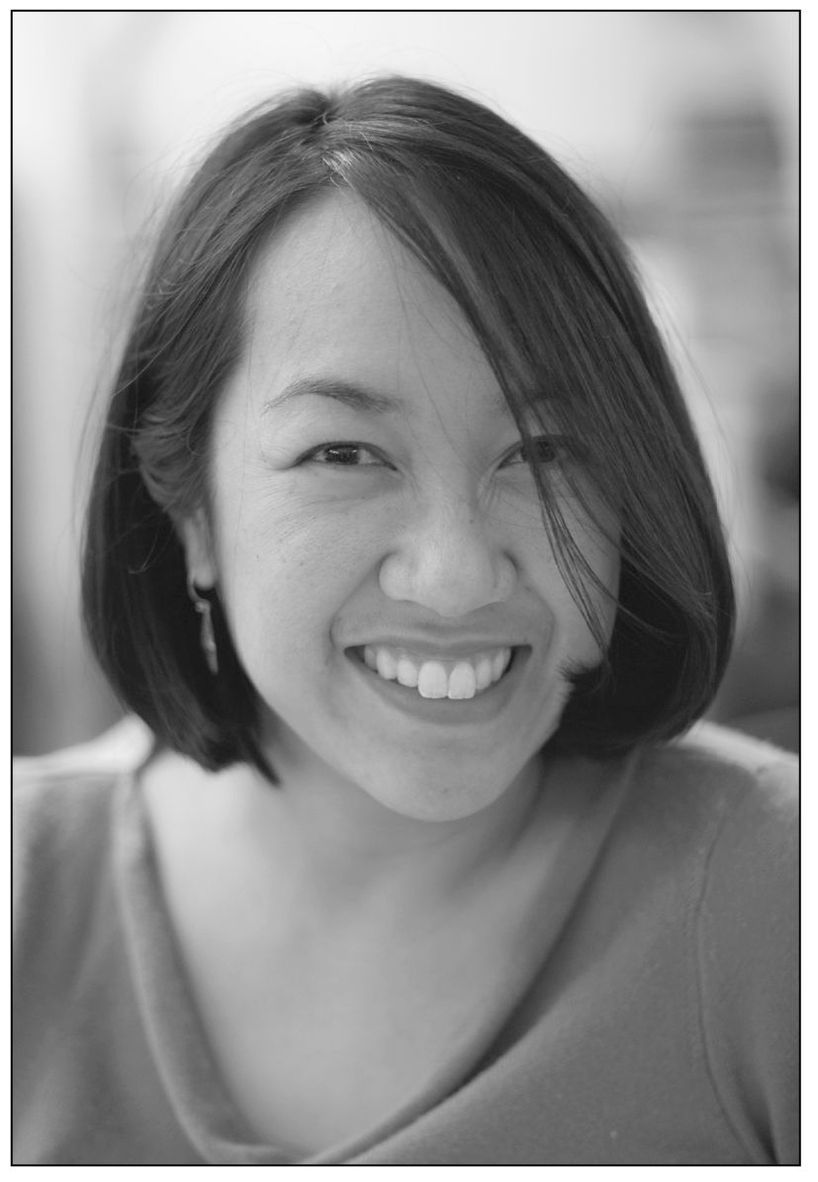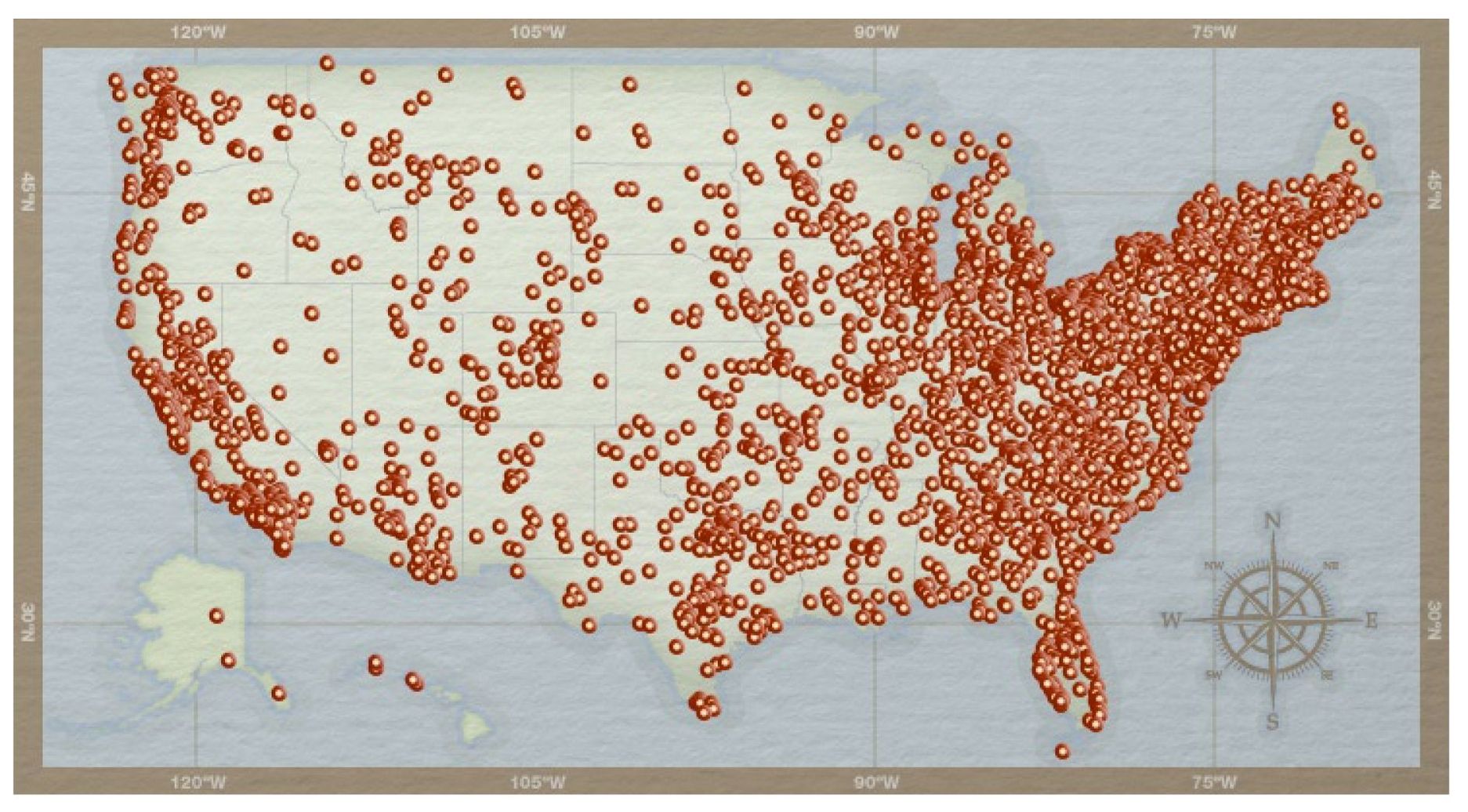ACKNOWLEDGMENTS
I would like to express my deepest appreciation to the families who opened their hearts, homes, and albums and shared their stories and pictures for this project. I am grateful to Nora and Federico Talaugon Jr., Tony Baker, Tony V. Grey, Ellen and Chief Deputy Dante Honorico, Josie and Al Bautista, Cathy and Jim Ines, Nellie and John Obispo, Vicky Barretto, Vincent Ines, Dora Ines Vaca, Fe and Florentino Toots Vinzon, Irene and Eduardo Austria, Clara Tawa Montayre Desaucido, Julia Carrillo Macasieb and Ingemar Macasieb, Beatrice Talaugon-Dunn, Vic R. and Coring G. Mercado, Delia and Sid Cabran, Lisa and Domingo Dela Rosa Jr., Augie Castaneda Jr., Eloisa Gomez Borah, Delia and Bill Coleman, Lillian Omo Roman, George Omo III, Elizabeth and Mayor Emeritus Stanley Daily, Lynette and Robert Tayag, Monsignor Jon Marajucon, Marie and Judge Bernie LaForteza, Virginia LaForteza, Elaine and Jack Alpenia, Rosalina and Alejandro Sarreal, Darlene Johnson, Charleen Morla, Pete Villanueva, and Rosalie Marquez.
These families and photographs represent the leadership, members, and heart of the following organizations past and present: Filipino Brotherhood of Ventura County, Caballeros de Dimas-Alang, Jordan Lodge 604 Legionarios Del Trabajo, Filipino Optimist Club, Filipino Community of Ventura County Inc., Filipino Youth Club, Filipino Sports Club, Associated Farmers Ventura, Filipino American Social Club, Mabuhay Club and Ladies Auxiliary, Filipino American Military Retired Club and Ladies Auxiliary, Zambalas Association, Cavite Association, Visayan Association, Filipino American Council, Philippine Center, PINOYS, Anacapa Lodge 710, Knights of Columbus, American Legion No. 48, Filipino American Seniors, Philippine Patron of the Arts, Kapitbahay , Filipinos on the Limelight , Filipino American Golf Association, Rotary, Salin-Lahi, Mary Star of the Sea Church, Santa Clara Church, Simbang Gabi, Camarillo State Hospital, Ventura County Sheriffs Department, Filipino American National Historical Society California Central Coast, La Union Association, Filipino Americans of Camarillo, and the Ilocano Association.
Thank you to my editor Jerry Roberts for his support and patience. I am grateful to my colleagues at local institutions Gina L. Nichols, US Navy Seabee Archives, Charles Johnson, Ventura County Museum and Library, Dow Jarvis, Oxnard Public Library, and Dr. Pat Lyons, St. John Seminary Library.
These photographs and many more that were not included because of space restrictions will be part of a community-based Filipino photo digital collection at the John Spoor Broome Library at California State University Channel Islands. I hope this collection of primary sources will provide historical insight for future generations. Thank you to library dean Amy Wallace for giving me the green light on this digital project and to my colleagues at the library for their support. I work at the best library and have the best colleagues!
I would also like to thank my mentors Eloisa Gomez Borah and Dr. Clara M. Chu for their guidance and support these past years and for planting the seeds to create this collection. Thank you to Dr. Jose Alamillo for always pointing me to new resources and discoveries. Thank you to Florante Peter Ibanez for all his support, editing, and guidance throughout this process. Thank you to my dearest grandpa and grandma, Ken and Elnora Kelly, and my dear friends Zarina Iqbal and Martha Reyes for their love and support. Thank you to Janet Pinkley for her love and support with covering classes, editing, compiling the index, and for being my best compadre at work. Thank you to Jason De Castro for his love and support with continuously editing, brainstorming ideas for all my projects, the late night pep talks, and for being my partner-in-crime best friend. Most of all thank you to my mom and dad, Victoria and Marner Tayag for all their love and encouragement and always being my biggest cheerleaders.
Unless otherwise credited, images are from the authors collection.
Elnora Kelly Tayag is a librarian and assistant professor at California State University Channel Islands, where she teaches critical thinking. She serves on the Filipino American Library (FAL) Board of Directors. A native Angelino and former middle school teacher with the Los Angeles Unified School District, Elnora earned her bachelors degree in art history from UC Irvine, masters degree in religion from Claremont School of Theology, and masters degree in library information science from UCLA.
BIBLIOGRAPHY
Barrios, Oscar. Pat Carrillo, Filipino American Profile. Kapitbahay , October 1994, 6.
Borah, Eloisa Gomez. Americans of Filipino Descent: FAQs. http://personal.anderson.ucla.edu/eloisa.borah/filfaqs.htm .
Daily, Stanley. Camarillo and Other Remembrances . Camarillo, CA: U Build a Book, 2007.
Fabros, Alex S. California and Second World War: Californias Filipino Infantry. http://www.militarymuseum.org/Filipino.html .
Filipino American National Historical Society California Central Coast Chapter. PI Market Pismo Beach, California. Stories, Legends, and Memories , InstantPublisher.com .
Filipino Boys, Students at Hueneme. Oxnard Courier , November 27, 1903.
Filipino Farewell Party at Hueneme. Oxnard Courier , June 24, 1904.
Filipino Leader Dela Rosa Dies. The Press-Courier , August 20, 1982, 2.
Fleming, Leonard N. Filipinos See Need to Boost Political Clout Activism. Los Angeles Times , August 29, 1993, 1.
No Longer the Value but the Promise. Kapitbahay , MarchApril 2004.
Reynolds, Helen. Filipino Community Reveres Leader. PC: The Weekly Magazine of Ventura County , April 19, 1981, 35.
275 Acres in Fine Peas on Arneill Ranch. Oxnard Courier , January 7, 1929.
Find more books like this at
www.imagesofamerica.com
Search for your hometown history, your old
stomping grounds, and even your favorite sports team.
One
THE PIONEERS
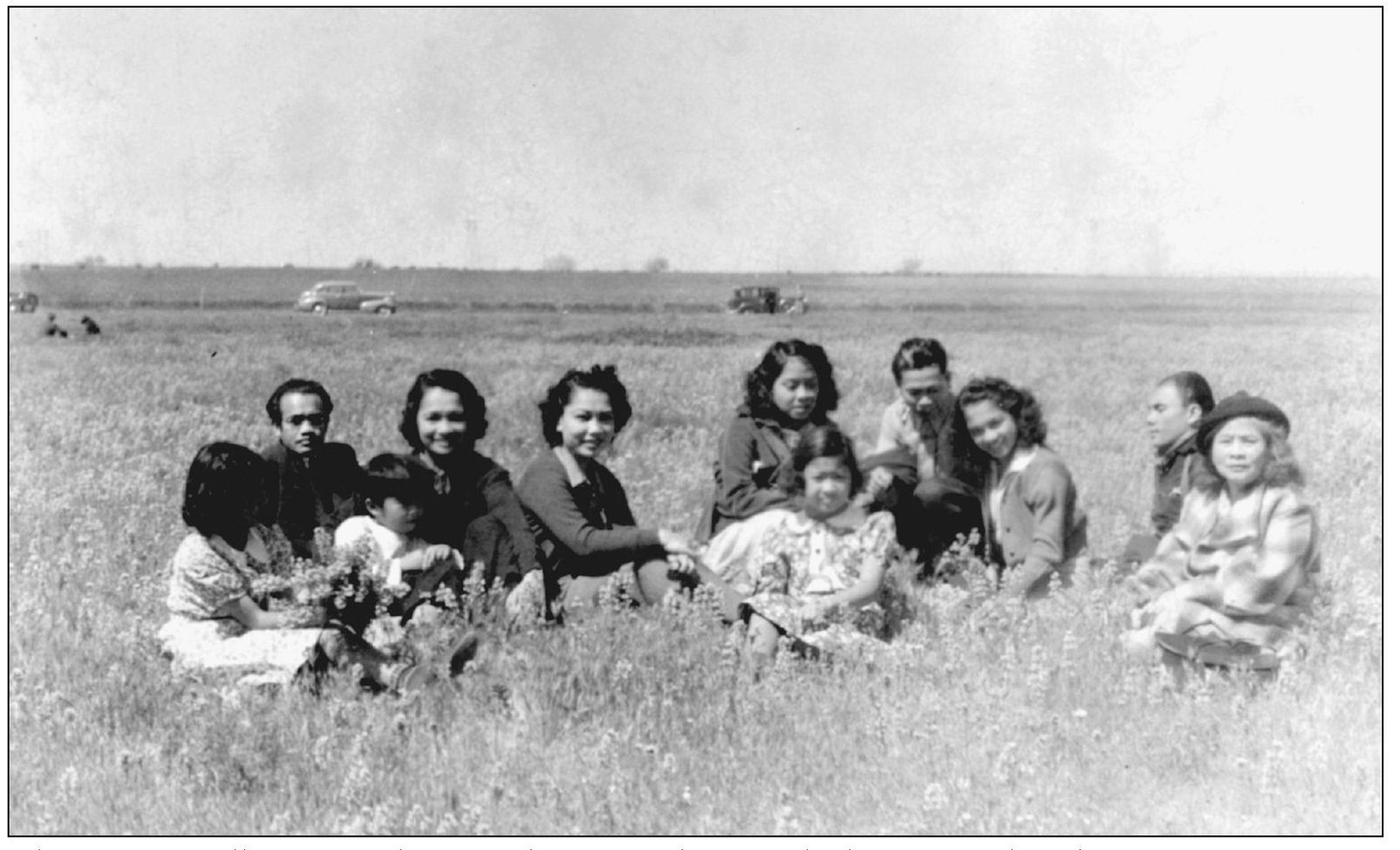
Filipinos originally came to the United States in the 1920s looking for work and greater opportunities. Most Filipinos arrived in northern ports like Seattle or San Francisco, worked as laborers, and followed the crop rotations and seasons, traveling from California to Alaska and back. It was very common that Filipinos arrived in Ventura County by way of Stockton, California, a major Filipino hub for new immigrants at the time. Discrimination was very real and educated Filipinos worked as laborers, houseboys, and cooks because no one would hire them otherwise. Despite being socially excluded from mainstream America, Filipinos organized and created social networks, played sports, established fraternal orders, and nurtured their communities. In Ventura County, they started two homegrown organizations, the Filipino Brotherhood Association of Ventura County in 1928 and the Filipino Community of Ventura County Inc. in 1931. The Tydings McDuffie Act of 1934 changed Filipino immigrant status from US nationals to aliens and limited new entry to only 50 Filipinos per year. At the time, the ratio of Filipino men to women was 14 to 1. Coupled with antimiscegenation laws, most Filipino men married women of Mexican, White, and Native American heritage, resulting in a new generation of mestizos. They put down roots, started families, and contributed to American society in positive ways. Here the Talaugons and relatives enjoy a meadow of wild flowers and California poppies in 1937. (Courtesy of Nora and Federico Talaugon Jr.)

